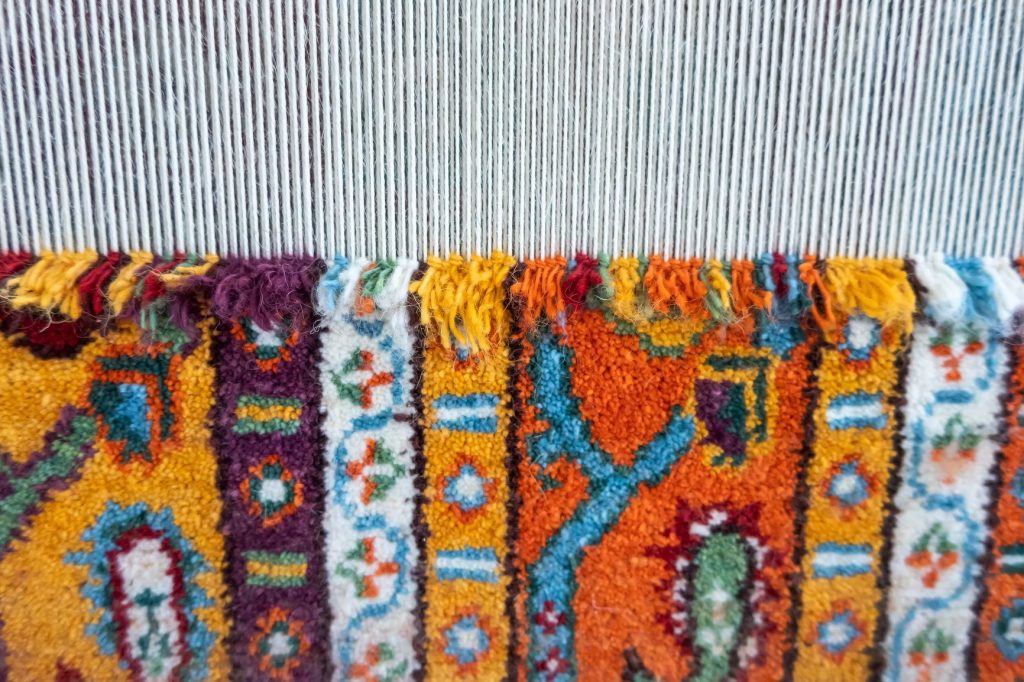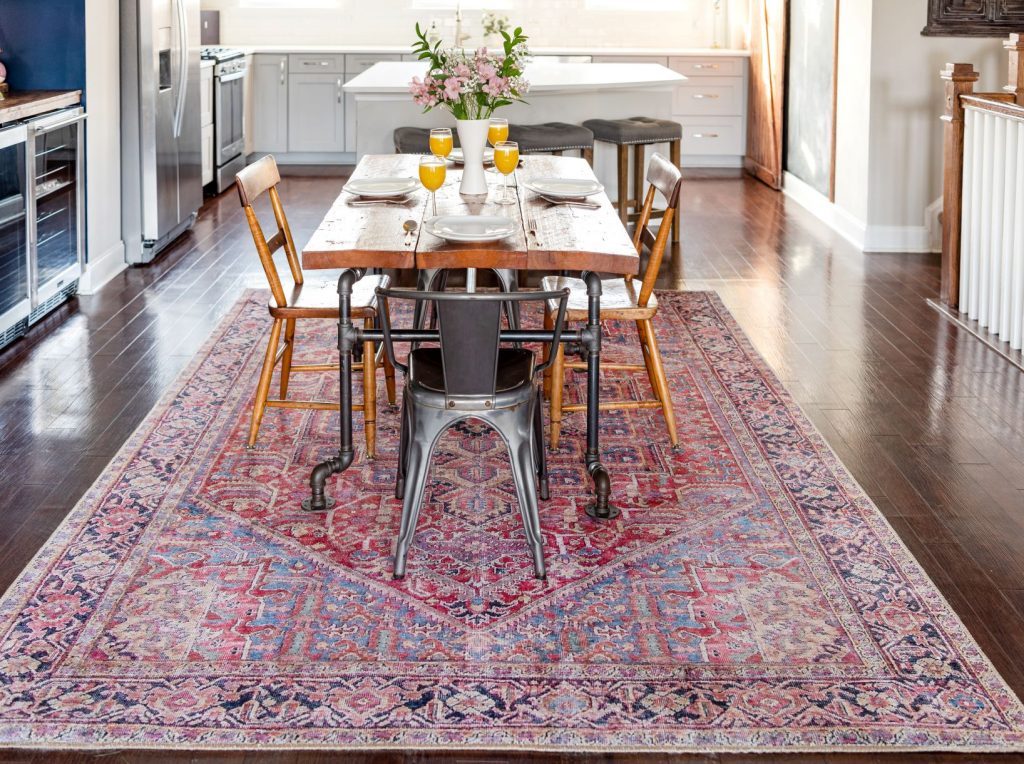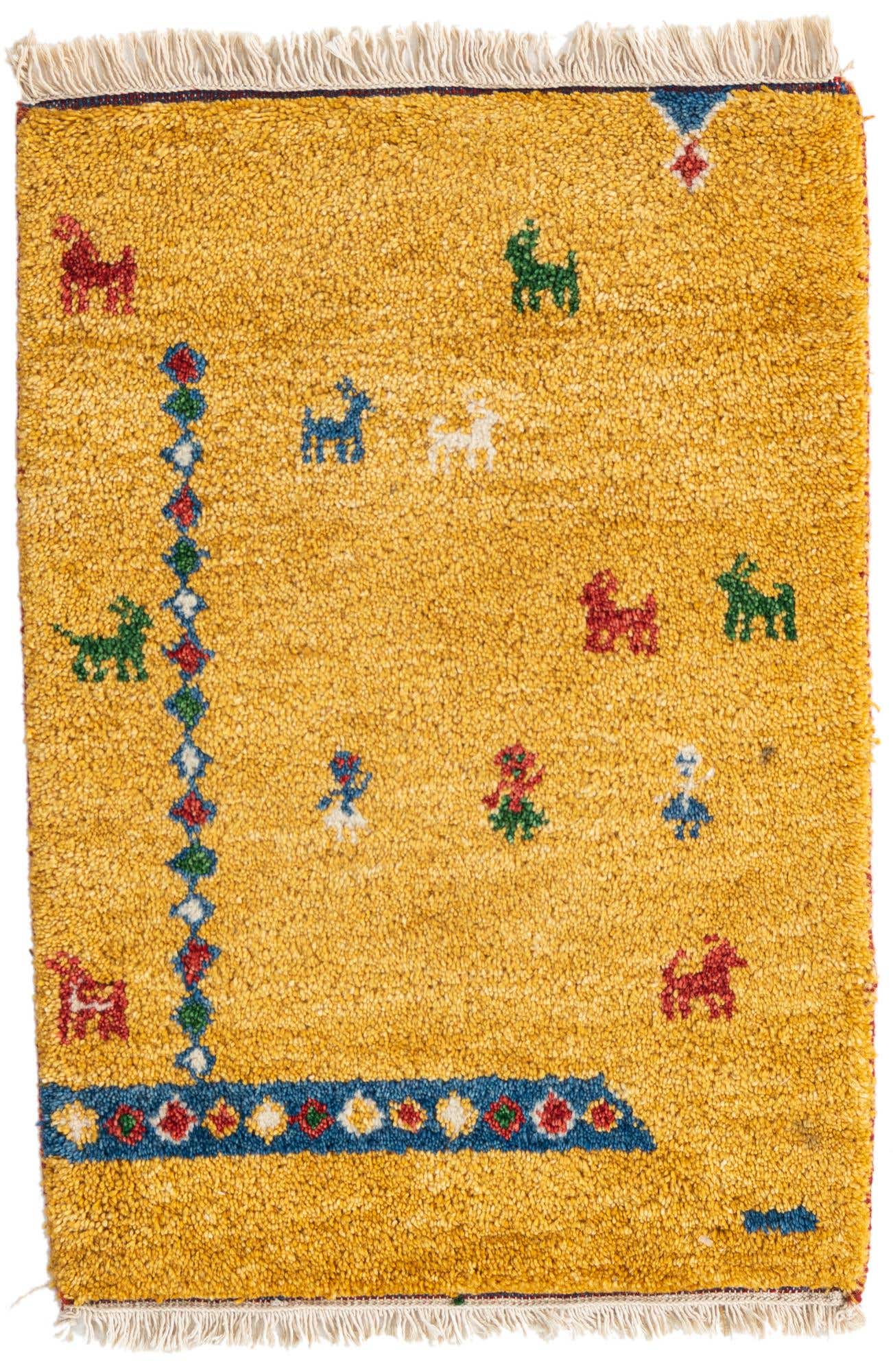PERSIAN RUGS: HISTORY
The history of the “Persian carpet” is rich and storied, dating back 2500 years. The dawn of carpet weaving in the Persian Empire is widely thought to have been during the reign of Cyrus the Great in the 6th Century BC. In fact, historians and folklorists alike have written about the ruler’s passion for rugs. Some even claim his tomb was strewn with countless priceless rugs. Yet it wasn’t until trade routes from European capitals to the Middle East became widely traveled in the 1500s that Persian rugs grew in popularity. The British, Dutch, French, and Portuguese expanded their power by colonizing less developed parts of the world and established trading posts across the Middle East. Iran began trading with the West and European elite began their obsession with Persian floor coverings they considered works of art. Persian rugs were eventually seen as a status symbol by European connoisseurs and their place in the world as a highly sought after asset was solidified.
Persian Carpet Demand
The growing popularity of Persian rugs in the 1700s led to foreign investment in what is now Iran’s second most lucrative export (after oil). In the Victorian era, the British penchant for vibrantly colored ornate floral patterns that mimicked their elaborate gardens led to foreign investment in Iran. Outsized European investment in the Persian rug industry led to increased production and demand. The demand for ever larger Persian carpets and the high value place on artistry helped expand the industry further until Persian carpets became the most coveted of all handmade rugs.

For an idea of just how prestigious and valued Persian rugs are, consider that the most expensive rug ever sold was an antique Persian carpet sold by Sotheby’s in 2013 for $33 million. The astronomical sale astounded even those who have long been in the rug trade. Like works of art produced by the masters, Persian rugs are held in high regard because of the amount of work, artistry, and detail that goes into hand knotting just one rug.
PERSIAN RUG CRAFTSMANSHIP
Persian rugs are not only floor covering but works of art known for their rich natural colors and fantastical designs. They are made with organic wool, silk, and cotton and are dyed with natural coloring. The work and importance placed on high quality at every step of the process is instrumental in adding to the beauty of these rugs.

Intricate patterns that have evolved over centuries are a hallmark of Persian rug design. The majority of rugs made in Iran have floral detailing. Flowers and other botanical and natural elements make up the smallest details. However, the way to identify a rug’s town, city, or region of origin, which is how Persian rugs are identified, is to step back and look at the big picture.
Persian Rug Designs
The center medallion is an uber present feature. Many Persian carpets incorporate a central ornate element, a sort of chandelier of floor covering. Isfahan, Nain, Kashan, Kerman Tabriz, Mashad, are all examples of Persian rugs that very often have a center medallion. Medallions can vary and one of the most discreet and tasteful versions, the Mahi (elongated lozenge), is popular in very fine rugs made in Tabriz. By contrast, the circular or hexagonal medallion with protruding floral points and elements are typical of fine Isfahan and Nain rugs.

The second most prevalent persian rug design is the Allover pattern, so called because a single flower or paisley shape (also called a Boteh) is repeated on the majority of the carpet and framed by a border that esthetically unifies the Allover design. Another common Allover pattern is the Herati, which consists of four leaves for four corners accentuated by other understated floral elements and then repeated all over the rug.
Heriz and Tribal rugs utilize designs that are more geometric or abstract and look very different from their cousins from other Iran provinces. Yet in fact their base elements evolved from the natural world just like the more ornate Persian designs. Over centuries the rug weaving artists melded the designs created by artisans of the royal court with the designs often seen in practical carpets woven by nomads. The geometric shapes we see in Bakhtiar, Hamadan, Nahavand, and especially Heriz rugs are the product of this progression.
PERSIAN CARPETS HAND KNOTTED CONSTRUCTION
Persian carpets are woven on looms. These frames hold two threads through which the knots are pulled and knotted. The threads held taut vertically are called the warp. The weft runs horizontally weaving in and out through the vertical warp threads. Persian rugs are exclusively made of wool, silk, and cotton. Occasionally, instead of sheep’s wool, camel or goat wool is used, but never synthetic material in hand knotted Persian rugs. The foundation can be made of cotton, sometimes silk. And the weave consists of wool or silk, sometimes both. The width of a Persian rug is determined by the width of the loom, unless two pieces are sewn together.

As each knot is made on the loom, the rug begins, ever so slowly to take shape. An image emerges and the feel and density of the rug is determined by the material, tightness (knots per square inch), and the height of the pile. High knot density often signals high quality. The origin of a Persian carpet identifies the rug. Experts and even connoisseurs can identify rugs by looking at the design, material, density, and colors.
The Persian Knot
One of the unifying elements of Persian carpets is the Persian knot, or asymmetrical knot. Most Persian rugs utilize this knot in which the yarn goes full circle around one warp thread and then is slipped under the adjacent thread before being pulled through to form the pile. This knot can be tighter and is better for intricate design work. Other knots, such as the Turkish or the Jufti knots are tied around two or four warp threads making for larger knots and limited precision in design.
The fineness of a Persian rug is often measured by the number of knots per square inch. Handmade rugs can range anywhere from 16 up to 800 knots per square inch. The rarest and finest ever known have reached up to 3300 KPSI, a feat that can only be achieved with silk threads and a silk foundation. Once the weave of the rug is complete, it is often finished off by creating fringe with the warp end.
PERSIAN RUG VALUE
Each Persian carpet is a unique work that takes skill, time, and quality material. The distinct designs also add value, all of which adds to the cost of acquiring handmade Persian decor floor coverings. With online options such as Handknotted.com, consumer prices have declined over the years and are fast challenging the idea that Persian rugs are expensive and out of reach for ordinary customers.

Yet because of the rare cases that make headlines when fine antique pieces are sold at auction for millions of dollars, some contemporary buyers believe all Persian rugs are expensive. Prices vary according to age, origin, and condition of the Persian rug, and if you’re looking to enhance your home or other interior, you don’t necessarily need to break the bank. In some cases a new or semi-antique Persian rug can seem like a bargain compared to some synthetic mass-manufactured rugs.
AUTHENTIC PERSIAN RUGS
How can you tell if a rug is an authentic handmade Persian rug? There are several ways to differentiate between machine made rugs and handmade Persian rugs. The first step is to turn the rug over or flip a corner over and check the back. The back of a rug holds many secrets. Although machine made rugs can be beautiful additions to any space, if you’re looking for an authentic handmade piece, the back will hold the answer. Machine made rugs are generally woven on power looms that create uniform knots. The knots on the back of these rugs look like identical soldiers in an army. There are no variations in size, tightness, or color and everything is completely consistent and even. For authenticity, look for slight imperfections that characterize handmade pieces. Unless you are looking at an extremely fine silk rug with 700 knots or more, which will look remarkably uniform, there will alway be a slight imperfection.

Another element to check on the back is the design. In authentic Persian rugs the design is just as apparent on the back side as on the front. Actually, the better the quality of the rug, the more beautiful the back is. The more knots per square inch the more delicate and apparent the design is not only on the front, but also on the back of a rug.
Also, examine the fringe closely. In handmade pieces, even if the fringe is braided or tied off as opposed to dangling, it will still be a region that extends from the carpet itself, from the warp. Machine made rugs generally use fringes that are completely separate pieces sewn onto the end of the carpet.
Persian Carpets Shine With Use
In wool rugs, another way to discern authenticity, particularly in vintage and antique rugs, is to look for patina. Over time, the high fatty lanolin content of fine wool will give the rug a lovely patina, or shine. It’s not the shine of silk but an understated glow that develops over time with use.
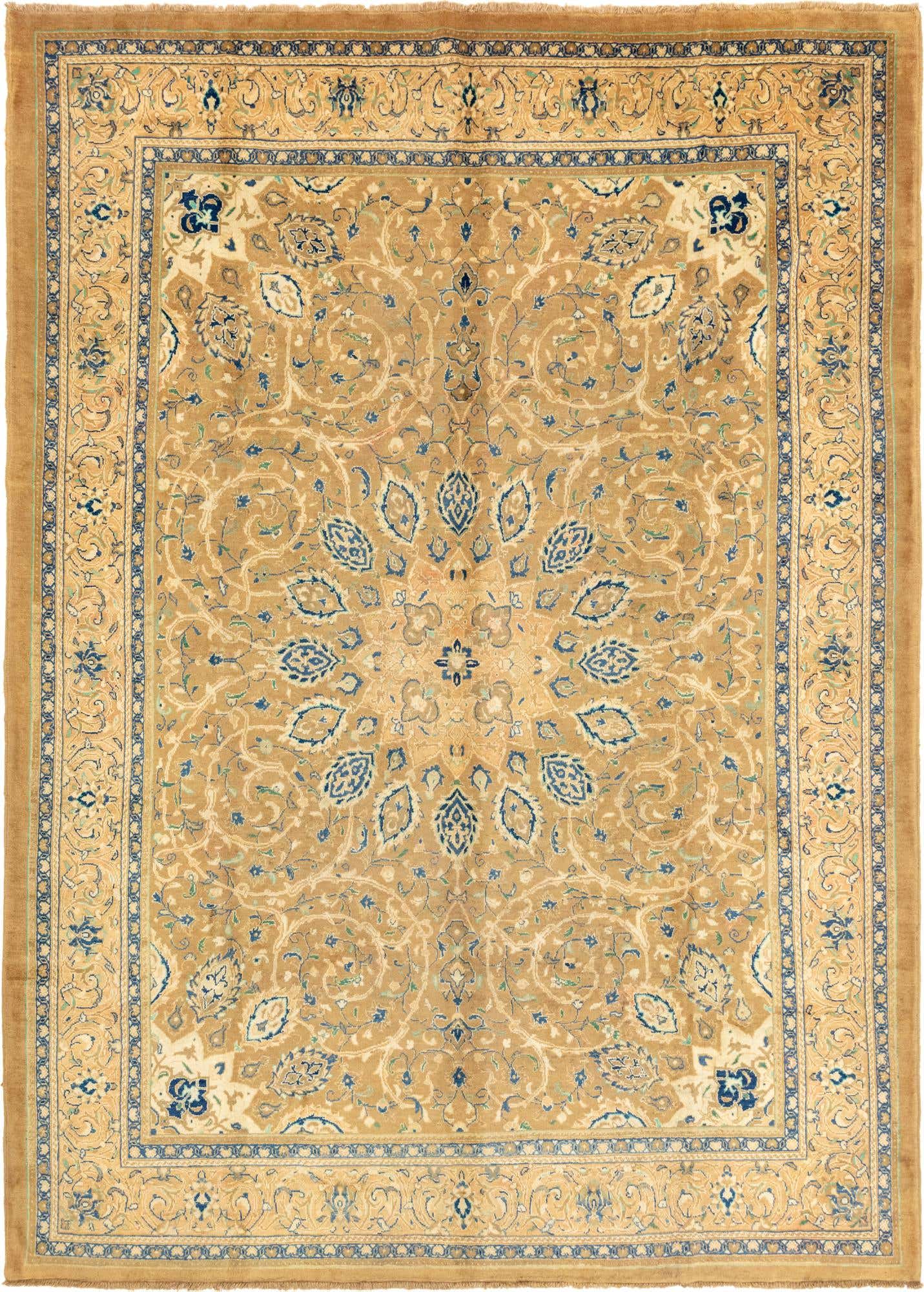
If you’re still not sure, go with your gut and remember to look for defining features. Machine made rugs are made from so many different materials. Some use wool and cotton, natural fibers, but other materials such as nylon, polyester, and olefin synthetic fibers are more common. Synthetic uniformity suggests machine made. Natural imperfections convey authenticity.
Related to the question of authenticity is the common phrase “the Persian flaw.” When Iranians use the phrase, the flaw in question is implied to be deliberate. The phrase is believed to originate from the intentional mistakes some weavers incorporated into their rugs. Fusing folklore with religion, the idea was that only God’s creations could be perfect, and so to weave a perfect rug would be an insult to God. Sounds a bit egotistical though—that these weavers believed they were capable of perfection.
PERSIAN RUG NAMES
Persian rugs are categorized by their city or region of origin. Tabriz rugs hail from Iran’s historic Azerbaijan region nestled in the Quru River valley. It is Iran’s closest hub to Europe and major rug producing region. Isfahan rugs likewise are produced in Isfahan and are known for their beauty and quality. Shah Abbas the Great was an inspired King and a patron of the arts. He moved Iran’s capital to Isfahan and launched an artistic renaissance in the 16th century which gave rise to “The Golden Age of Persian Weaving.”
Kerman rugs (also spelled Kirman) are generally made in the south central part of Iran known by the same name. It is the name of a city and a province. In the 18th century, rugs made in the Kerman province were renowned as the best in Persia. Likewise Bakhtiar rugs are made by the Bakhtiari tribespeople who roam the Zagros Mountain region. They are famed for their treks through dangerous terrain as well as their earth toned carpets. Their rich-hued works often depict the four seasons the Bakhtiari people have come to respect and mark their migrations.
FAMOUS PERSIAN RUGS
Largest Persian Rug
The largest rug ever made in the world was made in Iran by the Iran Carpet Company for the Abu Dhabi mosque. It is over 60,000 square feet (5,630 square meters) and was made in nine sections that were then assembled together inside the mosque in 2007.

Most Expensive Persian Carpet
The most expensive rug ever sold was an antique 17th century Persian rug. According to Sotheby’s the rug is a “sickle-leaf, vine scroll and palette vase-technique carpet” that most likely was made in Kerman. In 2013, it sold for $33 million at auction in London.

Magic Carpet
The so-called “Carpet of Wonder” located in Muscat, Oman in the Sultan Qaboos Grand Mosque is renowned for size and quality. It took 600 workers four years to construct. A total of 12 million human hours of work went into this wondrous piece.

The Finest Persian Rug
The most famous and important rug is considered to be the Ardabil Carpet, which is actually two rugs. The larger rug resides in the Victoria and Albert Museum in London. It was restored and reconstructed in the 19th century and is the better preserved of the two. The original date of completion is inscribed on the London rug and the Hijra date corresponds to the years 1539-40. The second smaller rug is in the Los Angeles County Museum of Art. The nearly identical rugs have a gorgeous Tabriz design with a central medallion and intricate unifying floral designs which surround it.
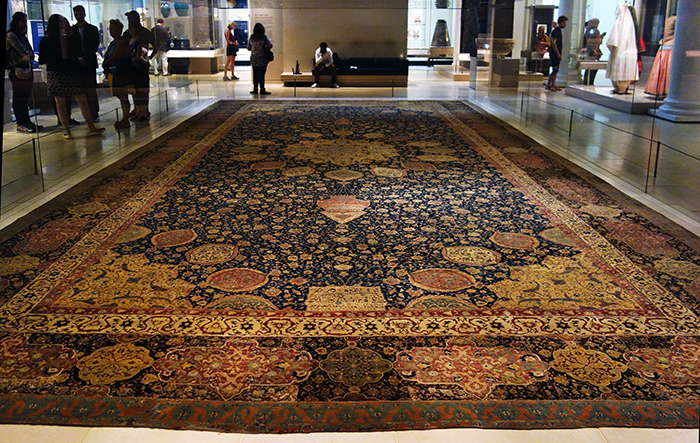
The truth is you don’t need to be a connoisseur, have $33 million dollars, live in a palace to own and enjoy a beautiful Persian rug. All you need is a sense of appreciation and good taste.

